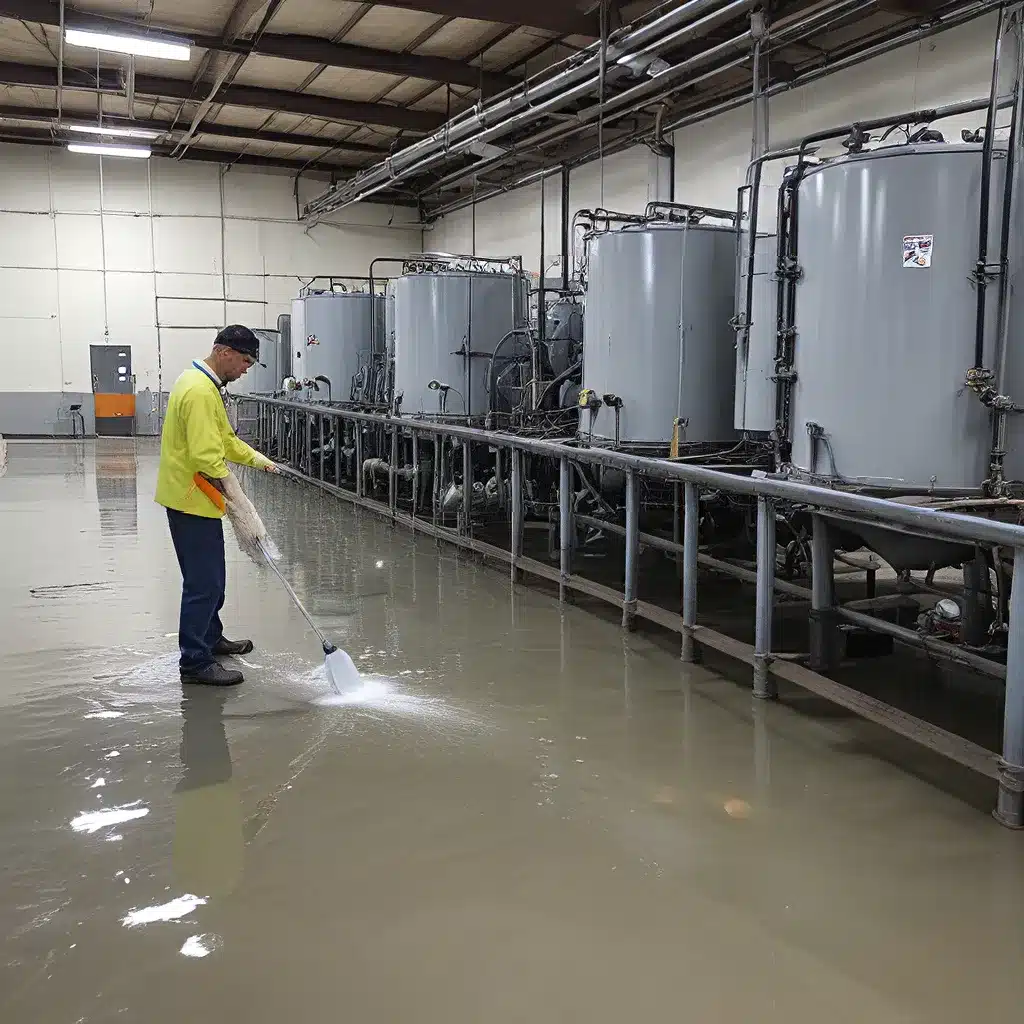
As an environmental enthusiast, I’ve always been fascinated by the intricate world of water treatment. It’s a symphony of science, technology, and innovation, where the quest for cleaner, more sustainable water solutions is an ongoing symphony. And today, I’m thrilled to share with you a captivating tale of how holistic industrial cleaning methodologies are revolutionizing the way we approach water treatment.
Embracing the Ecosystem Approach
Traditionally, water treatment has often taken a narrow, linear approach – focusing solely on the removal of contaminants from the water without considering the broader environmental implications. But as we delve deeper into the complexities of our water systems, a more holistic perspective has emerged. Ecosystem-based approaches to water management are gaining traction, recognizing the vital role that natural ecosystems play in maintaining water quality and availability.
Picture this: a wetland, teeming with life, filters and purifies water as it flows through. Or a lush, forested watershed that regulates the flow of water, mitigating the effects of floods and droughts. By protecting and restoring these natural systems, we can harness the inherent capacity of nature to manage our water resources sustainably.
Blending Grey and Green Infrastructure
But the journey towards holistic water treatment doesn’t stop there. Climate-resilient water management is another crucial piece of the puzzle. As our climate continues to shift, traditional water infrastructure, often reliant on rigid, “grey” solutions, is proving inadequate to meet the evolving challenges we face.
That’s where the integration of grey and green infrastructure comes into play. Grey infrastructure, such as water treatment plants and pipelines, can be complemented by nature-based solutions like constructed wetlands, urban forests, and permeable surfaces. This blended approach not only enhances the resilience of our water systems but also provides a multitude of co-benefits, from flood mitigation to habitat restoration.
Embracing the Power of Collaboration
But transforming water treatment through holistic industrial cleaning methodologies is not a solo endeavor. It requires a collaborative effort that brings together diverse stakeholders, from local communities to business leaders and government agencies. Participatory decision-making processes are essential, ensuring that a wide range of perspectives are considered and that water management solutions are truly inclusive and responsive to the needs of all.
Imagine a scenario where a water treatment facility works hand-in-hand with nearby businesses to implement urban farming and water innovations for sustainable agriculture. Or a community-driven initiative that empowers local residents to become active stewards of their water resources. By fostering these collaborative partnerships, we can harness the collective wisdom and resources needed to tackle the complex challenges facing our water systems.
Rethinking Industrial Cleaning Methodologies
At the heart of this holistic approach to water treatment lies the transformation of industrial cleaning methodologies. Gone are the days of relying solely on harsh chemicals and energy-intensive processes. Instead, we’re witnessing the rise of innovative, eco-friendly cleaning solutions that prioritize the health of our water ecosystems.
Imagine an industrial facility that adopts a holistic business transformation approach to its cleaning practices. By embracing natural, biodegradable cleaning agents and implementing water recycling systems, they can dramatically reduce their environmental footprint while maintaining the highest standards of cleanliness.
But the benefits of this holistic approach extend far beyond the walls of the industrial facility. As these eco-friendly cleaning methodologies become more prevalent, we’re seeing a ripple effect on the broader water treatment landscape. Wastewater treatment plants, for instance, can more efficiently process the effluent from these industrial facilities, reducing the overall burden on our water systems.
Navigating the Complexities of Water Treatment
Of course, transforming water treatment through holistic industrial cleaning methodologies is no easy feat. It requires navigating a complex web of scientific, regulatory, and economic considerations. But as we delve deeper into this journey, we’re uncovering a wealth of innovative solutions and inspiring success stories.
Take, for example, the Nordhavn district in Copenhagen, where a circular economy approach has transformed the way water is managed. By integrating nature-based solutions, water reuse systems, and collaborative stakeholder engagement, this sustainable urban living model is paving the way for a future where water is truly reimagined.
Embracing the Possibilities
As I reflect on the incredible potential of holistic industrial cleaning methodologies, I can’t help but feel a sense of excitement and optimism. The future of water treatment is not just about removing contaminants; it’s about embracing the intricate web of natural systems, fostering collaborative partnerships, and rethinking the way we approach even the most industrial of processes.
So, let’s dive in, shall we? Let’s explore the fascinating world of water treatment and environmental services, where innovation and sustainability converge, and where the possibilities are as endless as the flow of water itself. The journey ahead may be complex, but with a holistic mindset and a dedication to creating a more sustainable future, I’m confident that we can transform water treatment in ways we’ve only just begun to imagine.


